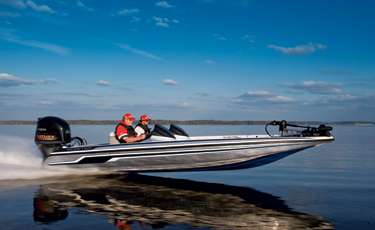
Winning two-man ("buddy") tournaments involves more than hooking and landing fish.
It's about teamwork, time management, and proper use of the boat.
No one knows that better than Alabama pro Russ Lane, who had a great deal of success fishing team tournaments before turning pro.
"Most team anglers just go fishing, but the successful ones have a system in place that makes them more efficient, and ultimately more successful," he says.
Here are some of the secrets Russ employed with his team partners:
Use two boats to practice: One partner looks for areas the fish are likely using while the other tries to determine where the fish might go from there. It's really important during transitional seasons, such as the spring, notes Lane.
"One partner finds the prespawn fish while the other looks for big females on beds," he explains. "Later in the spring, one may find the shallow postspawn fish and the other seeks out the fish that may have moved deeper."
Trust your partner: Good teams are not run by one person. It's about winning — not who catches the most or biggest that day. If your partner has a strong feeling about a move to make during the day, trust his instincts. Remember: first instincts are usually right.
Work banks in half the time: If fishing isolated targets like stumps, dock posts or weed clumps, the partner in the front should skip every other target so the partner can hit it. This prevents him from fishing used water and allows the team to move twice as fast. Also, maintain boat position that provides both anglers optimum casting angles.
Choose lures carefully: It's OK to throw different baits until you figure out what the fish want. But once you know that, both anglers should throw the same lure to cover water faster and more efficiently.
Use big baits for big fish: Remember, you only need to catch five bass and there are two of you covering water.
"I never cared what the majority of the fish were doing," Lane recalls. "I would ask myself, 'Where are the five biggest fish on this lake right now?' Those are the fish that make you a winner, so fish for them."
Net diligently: Be aggressive and use a long and wide net. Get down low and be in position. If a fish jumps and throws the bait, you stand a better chance of catching it, and that one fish can make a difference.
Save time: Both anglers should fish from the front. When you pull onto a spot, the passenger should already have the trolling motor down and be ready to cast before the driver is out of his seat.
The angler who nets a fish should unhook and place it in the livewell so his partner can make another cast.
When the angler running the electric motor needs to change baits, the partner should get on the trolling motor. Those added seconds equate to more casts … and more bites.

